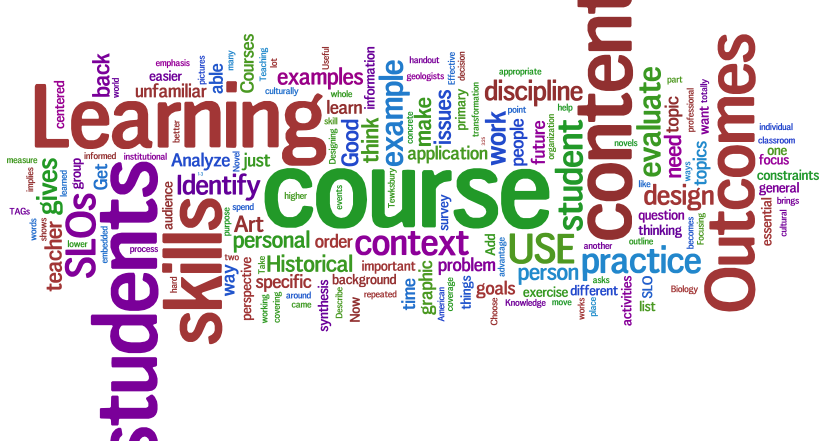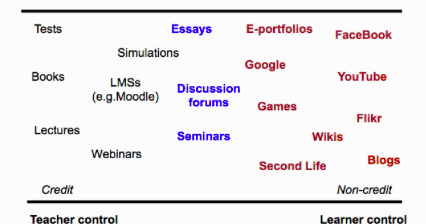Our objective in the Instructional Design in Online Learning course at Lamar University, was to learn how to create an online courses by applying constructivist learning theories and instructional design principles such as COVA, Fink's 3-Column Table and UbD principles. I evaluated an existing online course and redesigned it while applying principles of significant learning environments and considering implications of disruptive innovations. Implementing and managing course delivery in an online environment helped me to recognize my own teaching style and the characteristics of the learning audience, to ensure their success in an online environment.
I then created a Learning Outcomes 3 Column Table that aligned outcomes, assessment and activities for the instructional component of my Innovation Plan, a core undergraduate learning theory and application course. I started by considering the learning environment, followed by the development of effective learning goals and the alignment of those goals to the activities and assessment, and then building the 3 Column Table.
Following discussions with my classmates on topics related to digital learning and developing online courses, I crafted the following posts on my blog:
The Course Calendar lists the learning goals, activities and assessments of the five week course I developed in Canvas LMS.
While developing an online course I found it useful to refer back to online programs that I have successfully participated in the past:
References
EDUCAUSE Center for Analysis and Research. (2015, December). [Infographic of the 2015 student and faculty studies from the EDUCAUSE Technology Research in the Academic Community research series]. 2015 Study of Students/Faculty and IT. Retrieved from https://library.educause.edu/resources/2015/8/2015-student-and-faculty-technology-research-studies
EDUCAUSE Center for Analysis and Research. (2016, July 1). [Infographic of the 2016 student and faculty technology research studies from the EDUCAUSE Technology Research in the Academic Community research series]. 2016 Students and Technology Research Study. Retrieved from https://library.educause.edu/resources/2016/6/2016-students-and-technology-research-study
Fink, L. D. (2003). Creating significant learning experiences: An integrated approach to designing college courses. San Francisco, Calif: Jossey-Bass.
Tan, S. C., & Hung, D. W. L. (2002). Beyond information pumping: Creating a constructivist e-learning environment. Educational Technology, 42(5), 48-54. Retrieved from http://hdl.handle.net/10497/4735
Thibodeaux, T., Cummings, C., & Harapnuik, S. (2017). Factors that contribute to ePortfolio persistence. International Journal of ePortfolio,7(1), 1-12. Retrieved from http://www.theijep.com/pdf/IJEP257.pdf
Vygotsky, L. S. (1978). Mind in society: The development of higher psychological processes. Cambridge, MA: Harvard University Press.
Wiggins, G. P., & McTighe, J. (2008). Understanding by design. Alexandria, VA: Association for Supervision and Curriculum Development.

